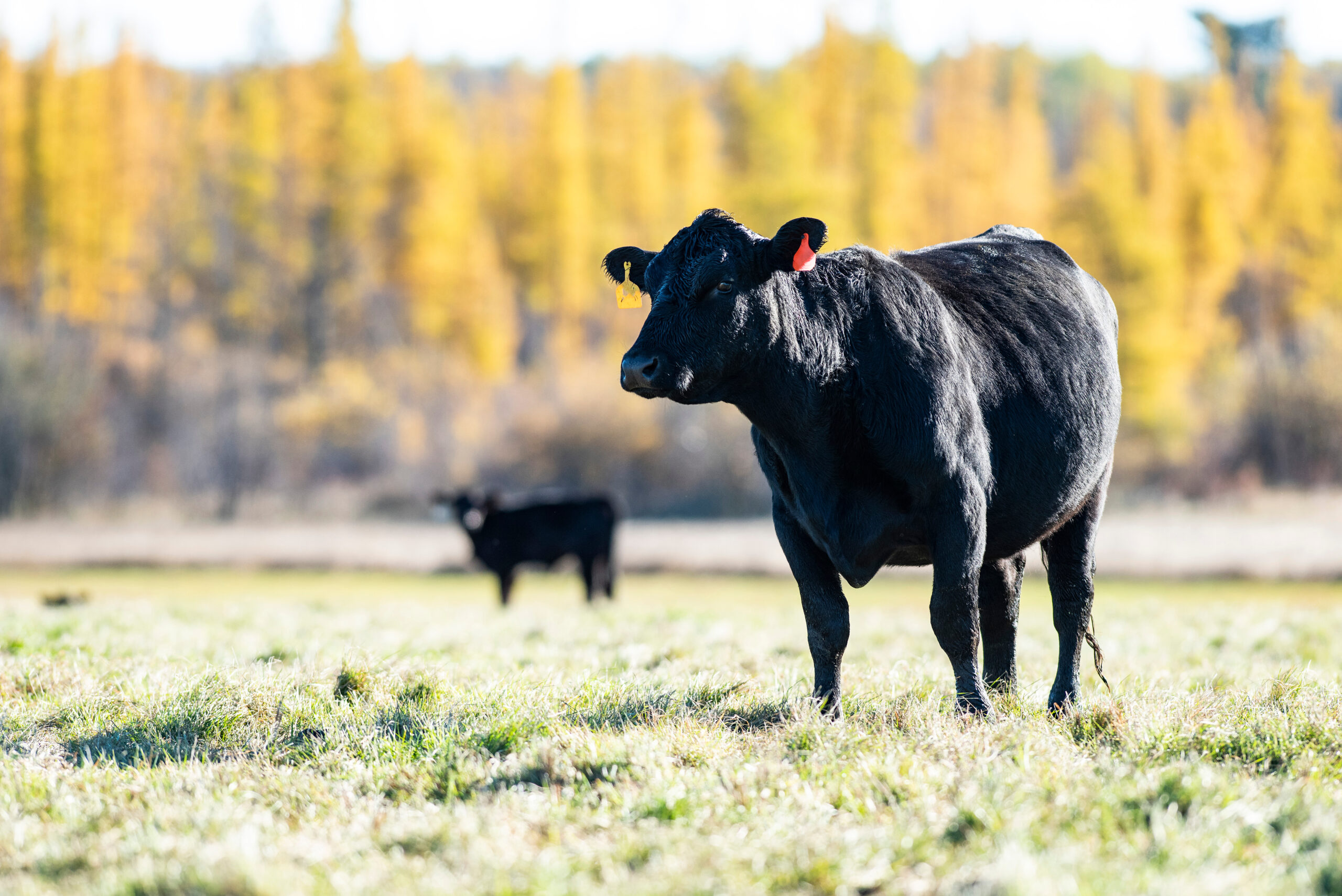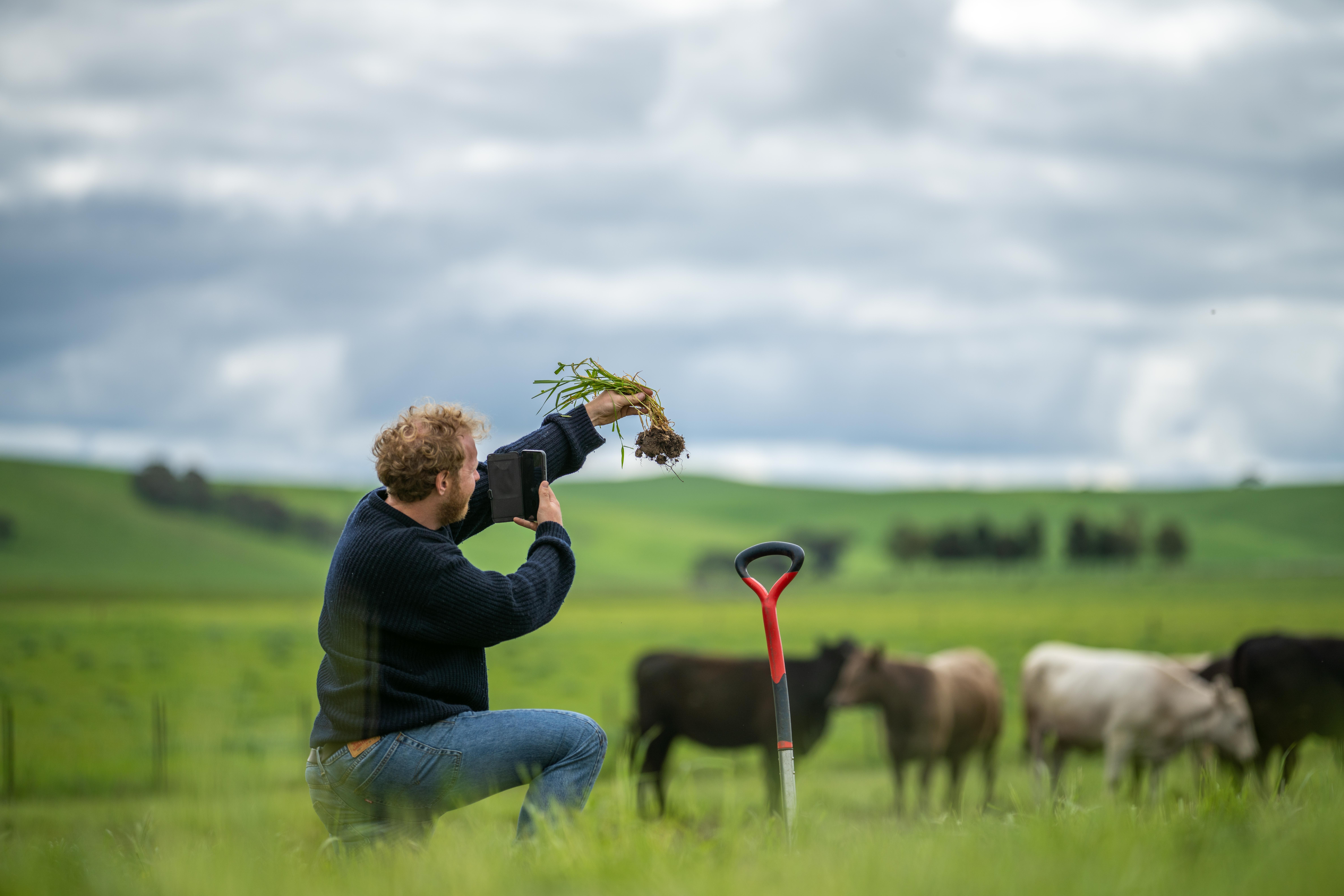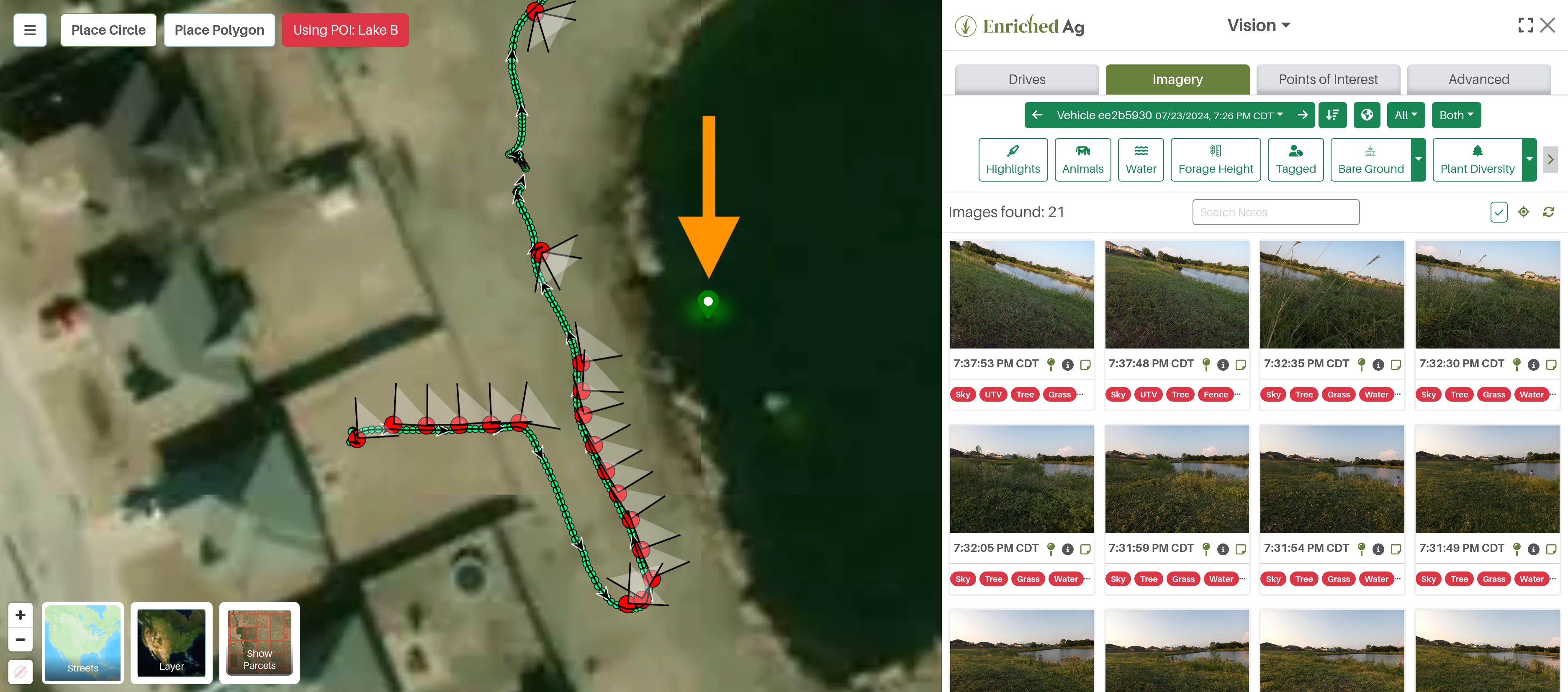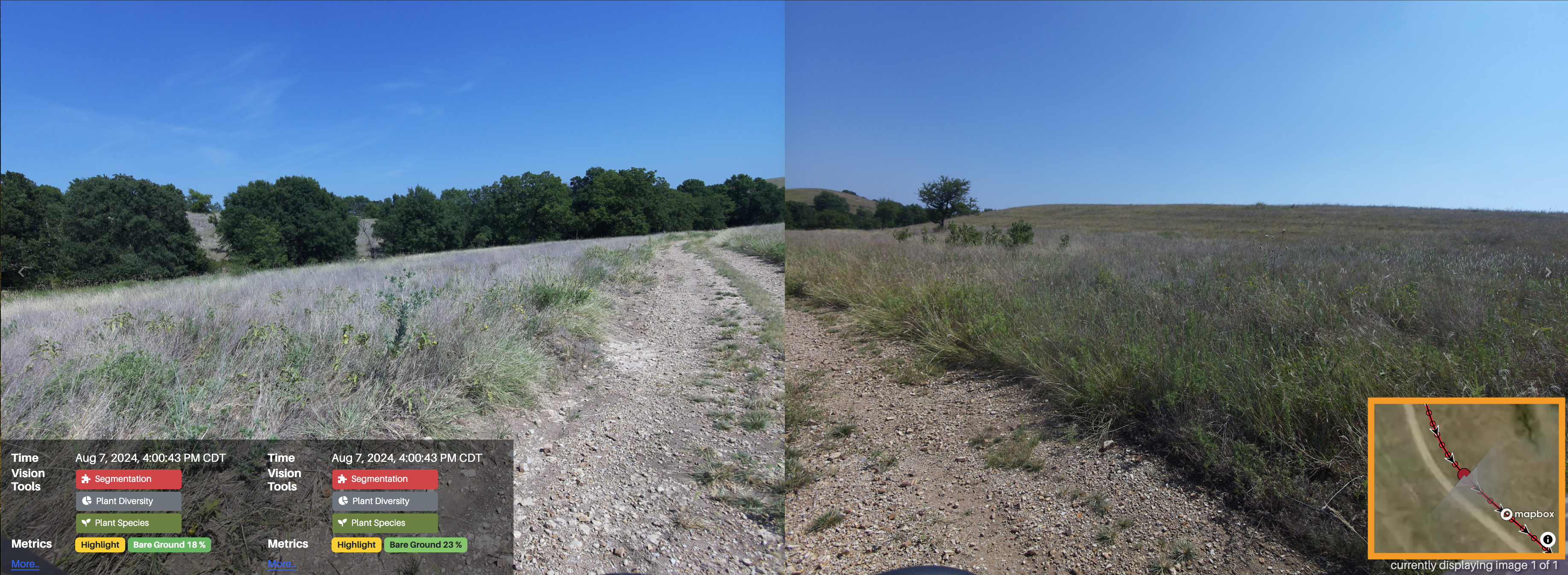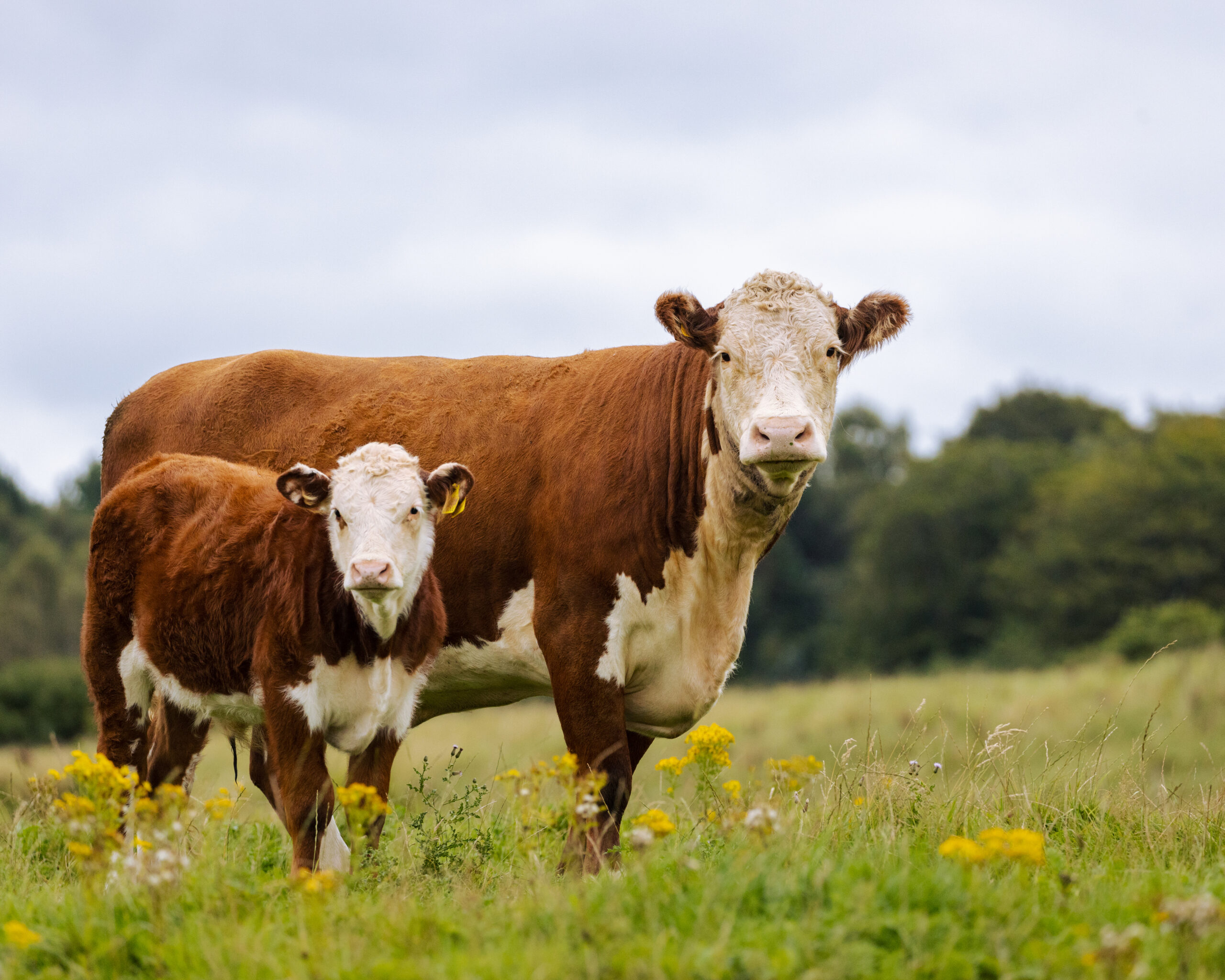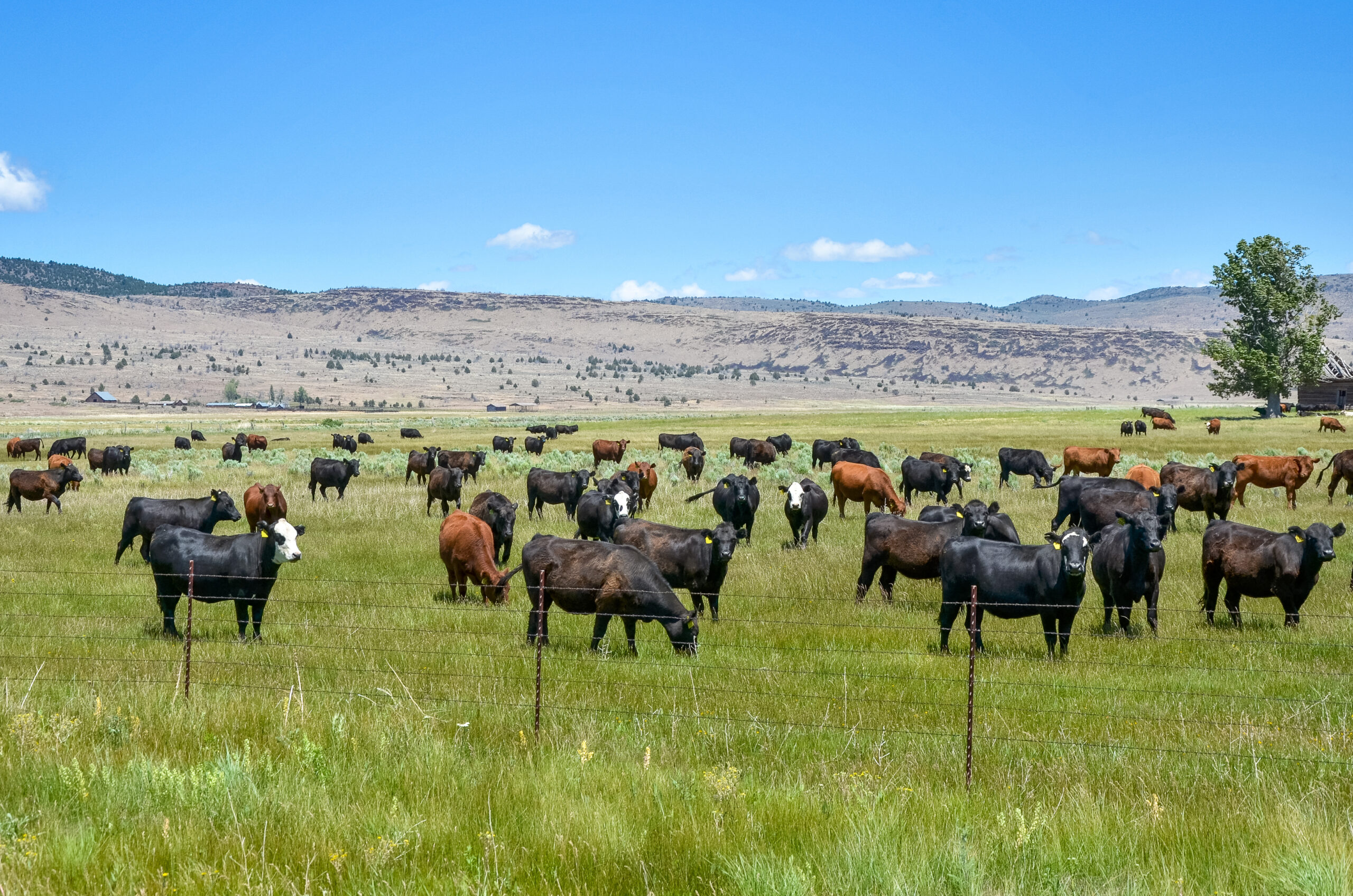Cooler morning and evening temperatures, coupled with bursts of yellow, red and orange across the landscape, signal the transition from summer to fall. Many ranchers like you anxiously await a reprieve from summer’s squelching heat but also know the end of the forage growing season is near.
While you may have planned for your winter feed needs the past weeks and months, it’s important to understand your forage biomass remaining for both developing grazing plans and monitoring soil health. It’s also an important time to evaluate herd wellbeing and infrastructure integrity. Enriched Ag Vision can help with all of these needs and more. Here are the top 5 uses for our tool this fall:
1. Determine residual forage availability
Depending on your location, you may be in the midst of drought or facing other weather-related challenges. Enriched Ag Vision can provide you with ground-level information on forage height and biodiversity. It can give you an idea of how well your pastures have recovered from summer grazing. It can help you determine any residual forage remaining for grazing through the fall and winter months, and help with your plans for improving conservation and soil health.
This visual ground-level data – combined with weather, drought, bare ground and forage production satellite data from Enriched Ag Insights – helps you reach your production and stewardship goals in the short and long term.
2. Keep living roots year-round for soil health
Living roots in the soil year-round provide a boost in soil health, structure and nutrient cycling. This is one of the six soil health principles.
Enriched Ag Vision gives you the opportunity to track vegetation health and growth patterns to better understand where living roots are and are not present across your land. Our models analyze images captured by the camera unit to identify living plant functional groups and help you make informed decisions for continuous plant growth. Patterns of forage growth and bare ground provided on a map allow for data-driven ranch and pasture-level decision making. You can also monitor your cover crop establishment and growth.
3. Understand plant diversity
Increasing plant diversity is another important soil health principle. The Enriched Ag Vision Plant Diversity Monitor helps you identify and quantify plant functional groups with detailed insights. The Plant Diversity Monitor pinpoints and shows you the following plant classes across your land: forb, tree, grass, shrub, cactus and bare ground.
The machine learning model for the Plant Diversity Monitor was developed from ground-truth data analyzed by domain knowledge experts. After you drive your land and collect images, the Plant Diversity Monitor can help you see invasive species, underperforming pastures, areas for restoration and conservation, or other issues that stem from a lack of diversity. Understanding plant diversity throughout the seasons can help you enhance pasture health, improve livestock performance and potentially reduce supplemental feed costs.
4. Monitor body condition of cows
Late summer and early fall is an important time for monitoring the body condition of your cows. Standard practice has involved producers evaluating their cows once or twice a year and giving each a score between 1 (emaciated) and 9 (very obese) using the BCS scoring system.
Rather than relying solely on a couple measurements a year and your visual assessment, Enriched Ag Vision can help score your cattle with its expert-trained machine learning models and provide you with frequent metrics on body condition. Knowing the score of your cows prior to calving gives you time to adjust your feed and weaning times to get cows to their target body condition of scores 5 to 7 at spring calving. Knowing body condition scores and ranges on your fall-calving cows will allow you to make strategic adjustments in supplemental feed and hay prior to the challenges that winter brings.
5. Monitor infrastructure, such as water, buildings and fences, and other points of interest
The Enriched Ag Vision platform can take your collected imagery and help you identify infrastructure on your property, map boundaries and flag any issues. Each Enriched Ag Vision unit has two built-in cameras – on the right and left – that capture imagery while you drive. With new directional information capabilities, you can better understand not only what is in the images you collect, but you can tell exactly where the image was taken. The map view shows a slight displacement from the drive line to detail which camera took the image.
Identifying and monitoring points of interest, or POIs, is the newest feature of Enriched Ag Vision. Using this, you can set certain infrastructure POIs, such as a fence, road, water body or building. You can determine a patch of bare ground or area of invasive species as a POI and evaluate pre- and post-treatment progress. Capturing and monitoring end-of-growing season POIs allows you to take care of your assets now to reduce the time you spend outdoors fixing problems in the harsh winter months.
Interested in additional monitoring options with Enriched Ag Vision? Contact our team, and let us know how we can help.
— The Enriched Ag Team
